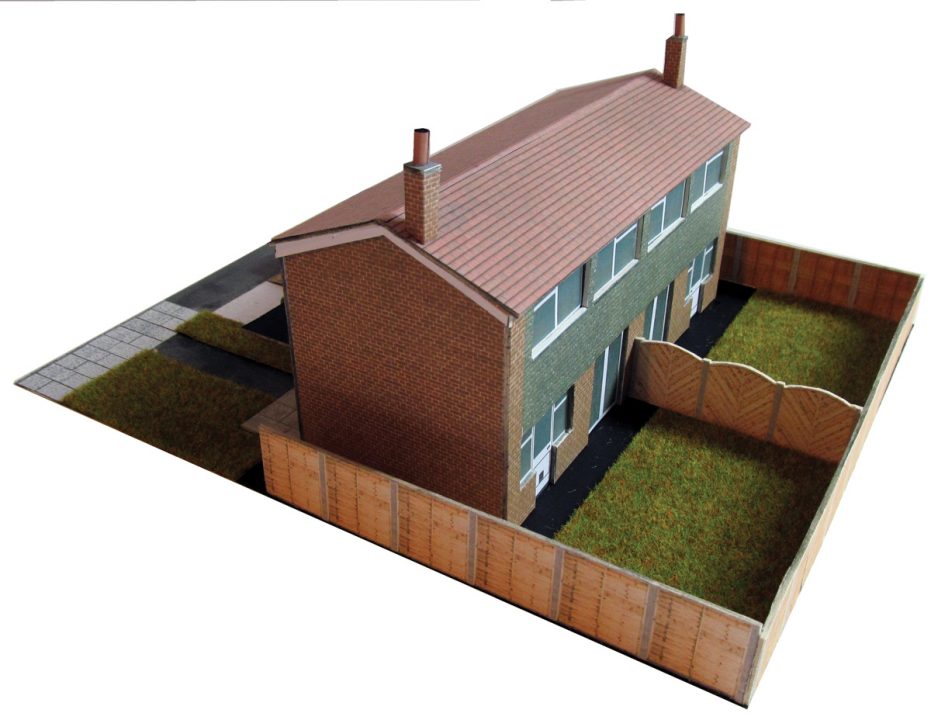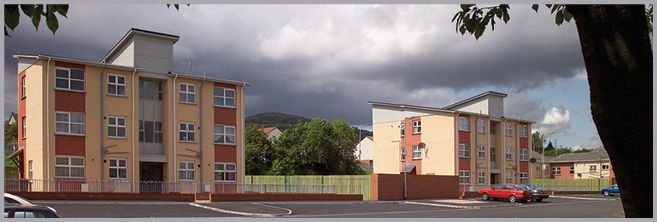
Regulating housing bodies
19th July 2017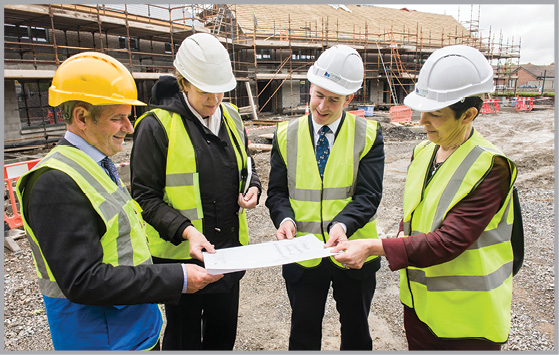
Fingal County Council’s strategy on housing is delivering
19th July 2017CSO publishes breakdown of Census 2016 housing themes

The Central Statistics Office (CSO) has published the first thematic report of the Census 2016 results: Profile 1 Housing in Ireland. The results show that a total of 2,003,645 houses and apartments were enumerated in the 2016 Census.
Of these 1,697,665 units were occupied by persons usually resident in the State. There were 183,312 vacant houses and apartments, while the census also counted 62,148 vacant holiday homes.
Deirdre Cullen, Senior CSO Statistician explains: “In recognition of the demand from users, and society in general, for a better understanding of housing in Ireland, the CSO has prioritised the housing release as its first thematic report from Census 2016.
“We believe this report provides a clear picture of some of the main developments in the Irish housing landscape over the past five years, including new analysis of vacant properties, such as type of dwelling and distance to the nearest town.”
Highlights of the report:
Considerable slowdown in housing stock growth
The total housing stock grew by just 8,800 (0.4 per cent) between 2011 and 2016, in sharp contrast to the growth of 225,232 dwellings recorded between 2006 and 2011.
Almost 10 per cent of the population is in accommodation with less than one room per person
There were 95,013 permanent households with more persons than rooms, according to Census 2016, accommodating close to 10 per cent of the population, at an average of 4.7 persons per household. This is a 28 per cent rise on the equivalent number in 2011 (73,997).
Decline in home ownership rate
The number of owner occupied households fell between 2011 and 2016 (from 1,149,924 to 1,147,552) causing the overall home ownership rate to drop from 69.7 per cent to 67.6 per cent, a rate last seen in 1971. The rate in rural areas fell from 84 per cent in 2011 to 82 per cent in 2016 while the percentage of urban homes owned (outright or with a loan) has fallen from 61.6 per cent to 59.2 per cent in 2016.
When examined by age the results show that renting was more common than owning before age 35. Beyond this, more householders owned rather than rented their home. The equivalent age in previous censuses was 32 years in 2011, 28 years in 2006, 27 years in 2002 and 26 years in 1991.
Cost of renting
The average weekly rent paid to private landlords in April 2016 was €199.92, up from €171.19 (16.8 per cent) in 2011. The highest growth in rent was in Dublin City which increased by almost 30 per cent while rises in excess of 20 per cent were also recorded in Dún Laoghaire –Rathdown (26.2 per cent), Fingal (22.8 per cent), South Dublin (22.7 per cent) and Kildare (20.3 per cent).
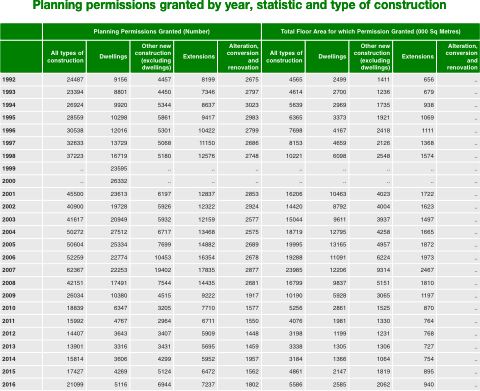
Types of dwellings
The number of occupied apartments (purpose built, converted and bedsits) increased by 11.4 per cent to 204,145 over the 2011-2016 period. This accounts for 12 per cent of all dwelling types in 2016 (up from 10.9 per cent in 2011). Within the Dublin City local authority area, apartments (74,537) were the main dwelling type for the first time replacing terraced houses (74,446).
Fewer vacant dwellings
There was a 15 per cent drop in the number of all vacant dwellings (including holiday homes) from 289,451 in 2011 to 245,460 in April 2016. 62,148 of these were holiday homes, leaving 183,312 other vacant dwellings. For the first time in Census 2016, the type of dwelling was captured for vacant dwellings. The results show that of the 183,312 other vacant dwellings, 79,966 were detached houses, 60,154 were semi-detached or terraced dwellings while the remaining 43,192 were apartments.
At individual town level, and excluding holiday homes, Blacklion (46.4 per cent) in Cavan had the highest vacancy rate, followed by Keshcarrigan (45.6 per cent) in Leitrim and Kilgarvan (43.1 per cent) in Kerry. Among larger towns (population of 10,000 or more) Letterkenny (14.9 per cent), Longford (14.6 per cent) and Ballina (14.3 per cent) ranked highest in terms of vacancy.
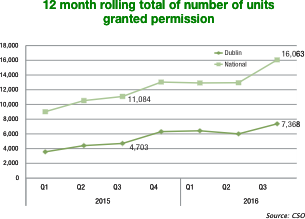
The census figures relate to the de facto population. In other words, the population recorded for each area represents the total of all persons present within its boundaries on the night of Sunday, 24 April 2016, together with all persons who arrived in that area on the morning of Monday, 25 April 2016, not having been enumerated elsewhere. Persons on board ships in port are included with the population of adjacent areas. The figures, therefore, include visitors present on Census Night as well as those in residence, while usual residents temporarily absent from the area are excluded.
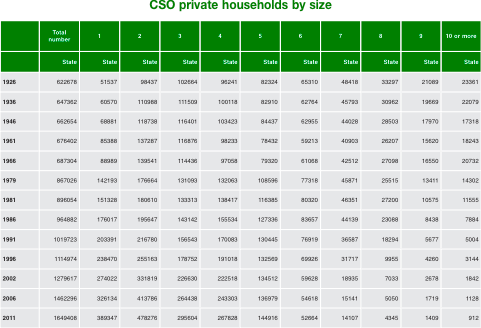
The de facto measure of the population in April 2016 was 4,761,865 while the usually resident total was 4,689,921 – a difference of 71,944 or 1.5 per cent. The usually resident measure is used when analysing topics such as nationality and households and families.
The housing stock is defined as the total number of permanent residential dwellings that were available for occupancy at the time of census enumeration. In this report, the housing stock consists of permanent, private households (inhabited by both usual residents and visitors), holiday homes, vacant houses or apartments, along with dwellings where all the occupants were temporarily absent on Census night. However, communal establishments, temporary private households (e.g. caravans and mobile homes), along with dwellings categorised by the enumerators as being derelict or under construction are excluded from this definition.
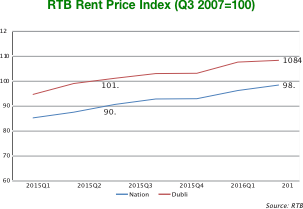
In identifying vacant dwellings, enumerators were instructed to look for signs that the dwelling was not occupied – e.g. no furniture, no cars outside, junk mail accumulating, overgrown garden etc., and to find out from neighbours whether it was vacant or not. It was not sufficient to classify a dwelling as vacant after one or two visits. Similar precautions were also taken before classifying holiday homes.
Dwellings under construction and derelict properties were not included in the count of vacant dwellings. As a result, the empty housing units were classified as vacant houses, vacant apartments or holiday homes only if the dwelling was considered fit for habitation by the enumerator. In the case of newly constructed dwellings, that meant that the roof, doors, windows or walls had to be completely built or installed. For older dwellings that were unoccupied, the roof, doors and windows had to be fully intact.

